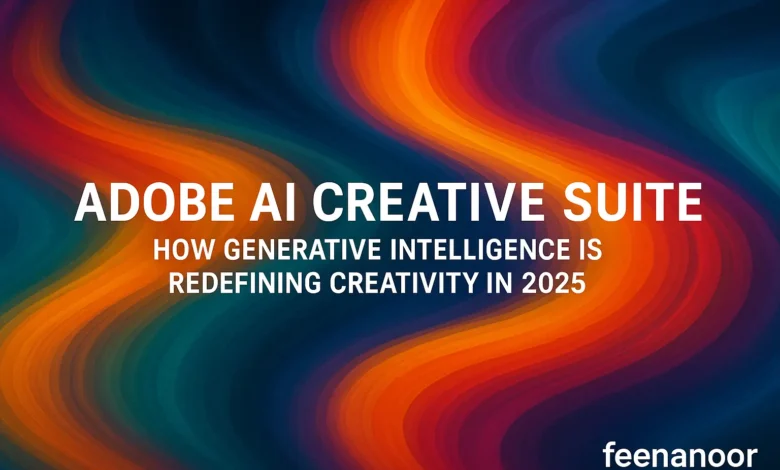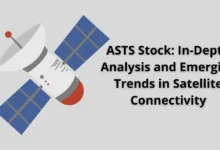Adobe AI Creative Suite: How Generative Intelligence Is Redefining Creativity in 2025

Adobe AI Creative Suite is revolutionizing the creative industry, merging artistic intuition with machine intelligence to reshape how professionals design, edit, and imagine content across digital platforms.
table of contents
How Adobe AI Creative Suite Is Changing the Future of Creative Work
The integration of AI into Adobe’s core ecosystem—Photoshop, Illustrator, Premiere Pro, and After Effects—marks a defining shift in how creativity functions in the modern era. No longer is AI an optional add-on; it’s becoming the foundation of the creative process itself.
During Adobe MAX 2025, the company unveiled a lineup of new AI-powered tools, models, and assistants that go far beyond the previous Firefly generation. These updates represent not just technical improvements but a philosophical change in how art and design are approached.
Adobe’s new AI Creative Suite introduces adaptive workflows, natural-language design prompts, automated storyboarding, real-time video scene enhancement, and text-to-vector generation. For designers, this means speed, precision, and limitless experimentation—all without sacrificing originality.
Read Also : Elon Musk Faces Tesla Pay Controversy Amid Grokipedia AI Launch
The Core Innovations Behind Adobe AI Creative Suite
1. Firefly Model 3: A Smarter, Contextual Generator
The new Firefly engine doesn’t just generate visuals—it understands them. It analyzes user intent, tone, and style history to deliver more personalized results. If a designer prefers minimalist typography or cinematic color tones, the model learns and reproduces that aesthetic consistently.
2. AI Video Assistant in Premiere Pro
Adobe’s new assistant can automatically create storyboards, match audio transitions, and even rewrite dialogue timing for pacing. Editors can describe a mood—like “tense and futuristic”—and the system adapts color grading and sound balance instantly.
3. Real-Time Collaboration with AI Agents
Teams can now collaborate with an AI co-editor that suggests layout adjustments, visual symmetry improvements, or even accessibility optimizations. This brings the concept of “co-creation” between humans and AI to a professional, ethical level.
4. Adaptive Creative Cloud Integration
Unlike earlier models, every Adobe app now shares a unified AI backbone. A designer working in Illustrator can seamlessly continue the same concept in Photoshop, with AI preserving context, mood, and visual hierarchy.
Why Adobe AI Creative Suite Matters for Professionals
The creative field has always balanced artistic freedom and technical discipline. What Adobe’s AI suite achieves is a fusion: artists gain freedom through automation. Instead of replacing creativity, the tools empower it by eliminating repetitive tasks.
For marketers and agencies, this means faster turnarounds and better scalability. For freelancers, it means expanding individual capacity. And for the global creative economy, it signals a new stage: where imagination is amplified by computation.
However, this also raises new philosophical questions—what defines “originality” when AI contributes to the process? Adobe has emphasized that its models are ethically trained on licensed and public data, ensuring that user-generated content remains fully owned by its creators.
The Human Touch in AI-Driven Creativity
Adobe’s vision highlights a truth often missed in discussions about automation: creativity is not just about generation—it’s about meaning.
While AI can now assist in visual decisions, human emotion remains the essence of storytelling. The AI serves as a “creative amplifier,” allowing humans to go further, not disappear.
Artists describe the experience as “painting with an extra pair of hands”—a digital partner that never tires and adapts instantly to vision shifts. This relationship redefines collaboration, not competition.
Challenges and Ethical Dimensions
Despite the excitement, Adobe’s AI expansion faces legitimate scrutiny.
- Data Ethics: Ensuring that training datasets do not include copyrighted material without consent remains an ongoing debate.
- Creative Ownership: The definition of authorship in AI-assisted content may require global legal frameworks.
- Skill Evolution: As AI handles more tasks, creative professionals must evolve toward conceptual and strategic thinking, rather than execution alone.
Yet Adobe’s transparency policies and the integration of “Content Credentials” (digital watermarks identifying AI involvement) represent an effort to maintain trust in an AI-driven media world.
Economic and Industry Impact
Adobe’s move isn’t just a technical upgrade—it’s an economic shift.
By embedding AI deeply into its subscription model, Adobe repositions itself as a data-driven creativity platform, not just a software provider.
This creates long-term implications:
- Increased value for Adobe’s cloud ecosystem.
- New revenue models from AI-assisted design.
- A growing dependency among creators on generative systems.
For the creative industry, this represents both empowerment and transformation. The tools democratize high-end design, allowing anyone—from small startups to global studios—to produce quality once reserved for experts.
The Adobe AI Creative Suite isn’t just another update—it’s the foundation of a new creative paradigm.
It signals a world where imagination scales with intelligence, where artists can visualize ideas faster than ever, and where technology finally feels human enough to collaborate.
But as this revolution unfolds, one truth remains clear: AI can enhance creativity—but only humans can define its purpose.
FAQ
Q1: What makes Adobe AI Creative Suite different from previous versions?
It integrates generative intelligence directly into every workflow, enabling cross-app learning and seamless design continuity without external plugins.
Q2: Does Adobe AI replace designers?
No. It automates technical barriers while preserving creative judgment and style—the human remains the author.
Q3: Are Firefly and other AI models ethically trained?
Adobe states that its models are trained on licensed and public data only, ensuring full content ownership for creators.
Q4: How will this affect freelance and creative markets?
Freelancers gain speed and flexibility, while agencies benefit from scaling projects efficiently. However, competition may shift toward those who adapt fastest to AI-integrated tools.
Q5: What’s next for Adobe AI?
Expect integration with spatial design, VR environments, and real-time voice-guided creation tools—blurring the line between imagination and execution.
Discover more from Feenanoor
Subscribe to get the latest posts sent to your email.









